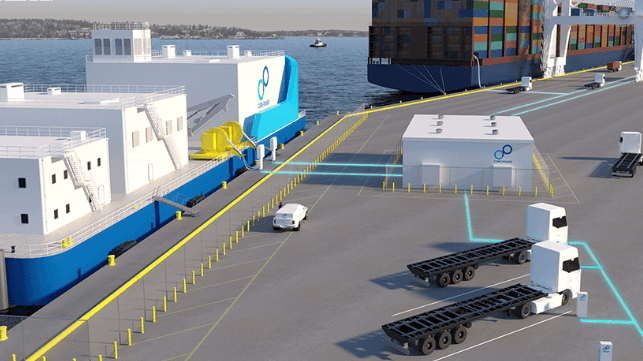Core Power Maps Effort for Nuclear Power Barges Leading to Commercial Ships

Core Power, a startup that is working to develop opportunities in the maritime sector using a new generation of advanced nuclear technology, outlined its vision to develop floating nuclear power plants that can be levered into nuclear-powered merchant shipping. The company will develop a U.S.-anchored maritime program named Liberty in honor of the mass-produced World War II Liberty ships.
Last month, Core Power announced it was partnering with Glosten to design a floating nuclear power plant that could be installed at U.S. ports. Naval architects and marine engineers at Glosten are focusing on the barge operational concept, design, regulatory path, site location approvals, and identification of potential suppliers for fabrication and installation of the barges which could produce about 175GWh of power per year.
CEO Mikal Bøe of Core Power provided more details on the vision during a presentation in Houston last week. The first part of the Liberty program he said will see the mass production of floating nuclear power plants (FNPPs). The expertise gained in rolling out FNPPs on a large scale he predicted will pave the way for the second part of the program, which involves developing nuclear propulsion for merchant ships.
“The Liberty program will unlock a floating power market worth $2.6 trillion, and shipyard construction of nuclear will deliver on time and on budget,” said Bøe. The company expects to open the orderbook for the floating nuclear power plants in 2028 and reach full commercialization by the middle of the next decade.
Using well-established shipbuilding processes and leveraging an already-skilled workforce, he envisions a modular production line for the power barges. Mass production will be possible says Bøe because they will employ advanced nuclear technologies, such as molten salt reactors. He points out that the new technologies are inherently and passively safe meaning they do not require the larger facilities and exclusion zones.
Employing the floating concept will make it possible to move the barges to ports and coastal locations to supplement local power capacity. Larger-capacity generation units would be anchored further offshore. The central shipyard will carry out the commissioning, maintenance, refueling, and waste management, making it simpler to choose locations for the barges. They will not require extensive site preparations. Core Power will also support the creation of the necessary framework for licensing, insurance, and export control.
Learning from the first phase, they will then focus on developing the supply chain and workforce. They look to leverage the program internationally which will support the growth of the applications. They also believe it will lay the groundwork for nuclear-powered commercial vessels.
Core Power reported last November that it was working with Westinghouse, one of the pioneers in nuclear power. The companies are focusing on the reactors that would be placed aboard the barges.
Several companies are looking at applications of the new smaller reactor technologies to provide easily positioned power stations. Samsung Heavy Industries in partnership with Seaborg, a Danish start-up pursuing next-generation nuclear technologies, is also developing floating nuclear power plant barges using Compact Molten Salt Reactor technology developed by Seaborg. This concept is also targeted at the opportunities to bring new power sources to remote areas and developing countries.
